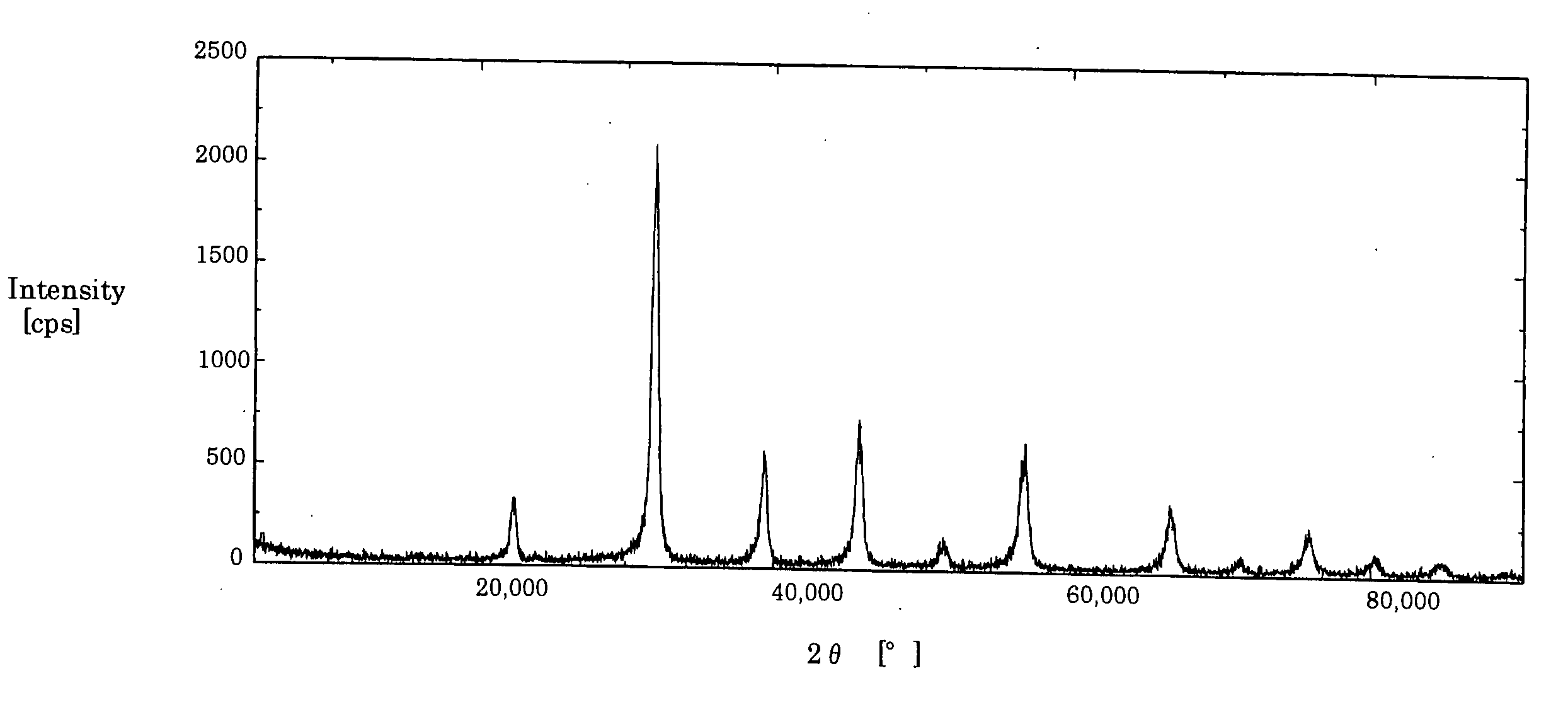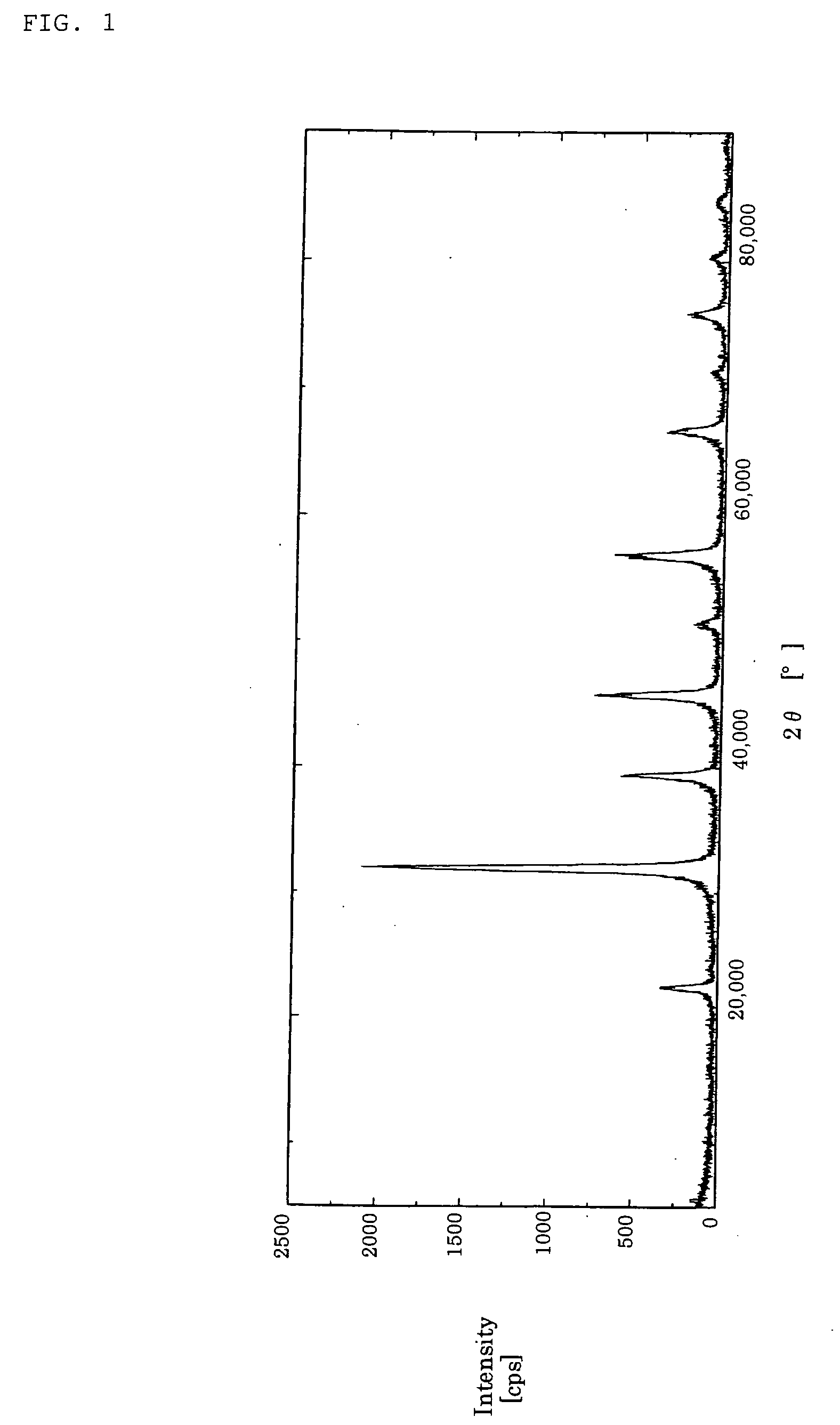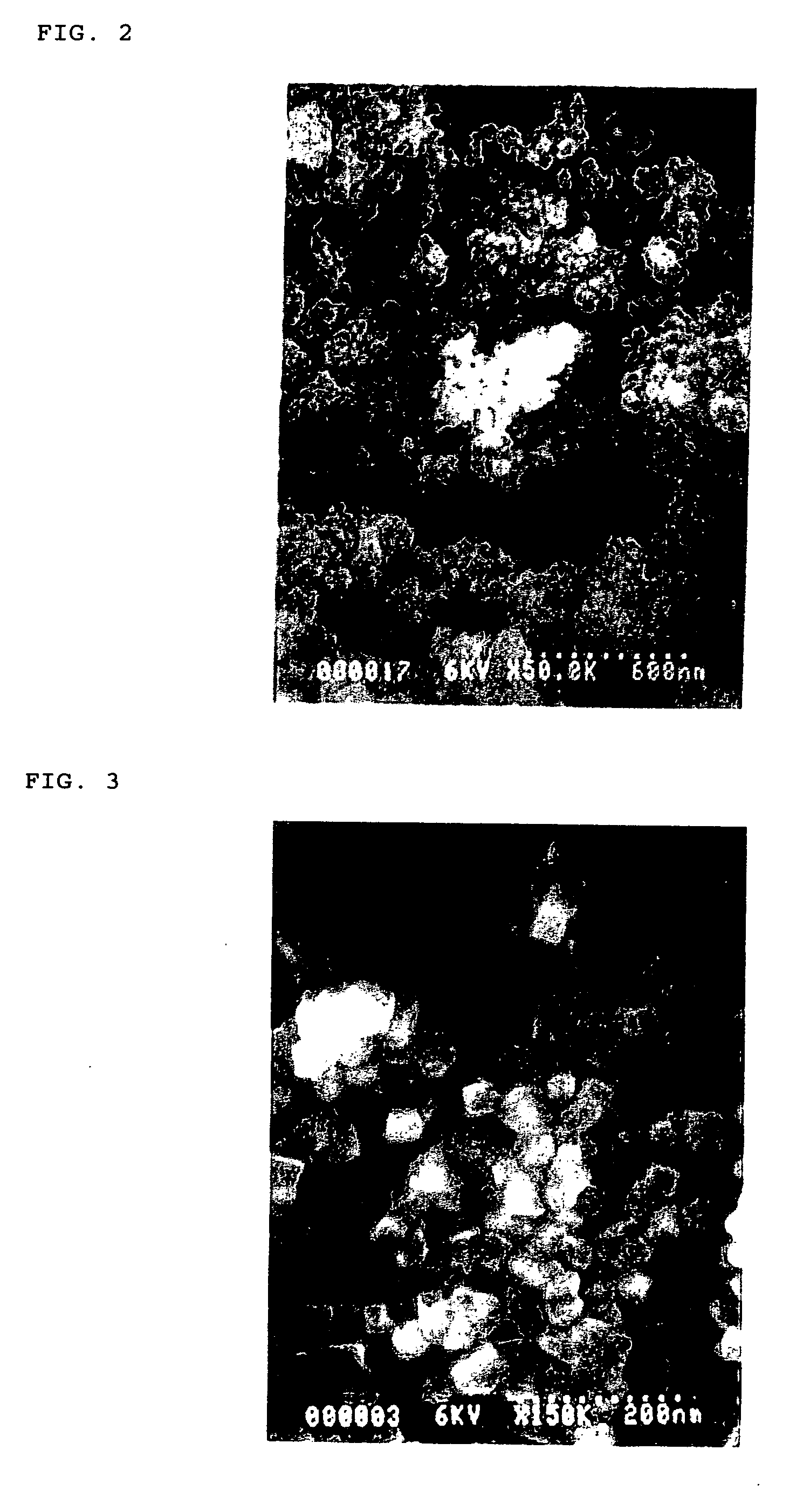Perovskite titanium-containing composite oxide particle, production process and uses thereof
a technology of composite oxide and titanium, which is applied in the direction of crystal growth process, fixed capacitor, ceramics, etc., can solve the problems of poor dispersibility of obtained particles, large particle size distribution, and high production cost, and achieves simple particle size, excellent dispersibility, and suppressed reaction rate
- Summary
- Abstract
- Description
- Claims
- Application Information
AI Technical Summary
Benefits of technology
Problems solved by technology
Method used
Image
Examples
example 1
[0158] An aqueous solution having a titanium tetrachloride (produced by Sumitomo Titanium Corporation, purity: 99.9%) concentration of 0.25 mol / L was charged into a reactor with a reflux condenser and heated to the vicinity of boiling point while keeping the solution acidic by preventing chloride ion from escaping. The solution was kept at that temperature for 60 minutes and thereby the titanium tetrachloride was hydrolyzed to obtain a titanium oxide sol. The obtained titanium oxide sol was dried at 110° C. and the crystal type was examined by an X-ray diffraction device (RAD-B Rotor Flex) manufactured by Rigaku Corporation and found to be a brookite titanium oxide.
[0159] Into a reactor with a reflux condenser, 456 g of an aqueous 20 mass % tetramethylammonium hydroxide solution (TMAH) (produced by Sachem Showa K.K., concentration of carbonic acid group: 60 ppm or less), 75.7 g of barium hydroxide octahydrate and 42.5 g of strontium hydroxide octahydrate were charged in a nitrogen ...
example 2
[0169] A barium.strontium titanate composite fine particle was produced by the same operation as in Example 1 except for using 50.5 g of barium hydroxide octahydrate and 63.8 g of strontium hydroxide octahydrate.
[0170] The reaction was continued until the total concentration of barium ion and strontium ion in the reaction solution became 1 / 1,000 or less of the amount charged. The ratio of the actual yield to the theoretical yield was 99.9%, the specific surface area was 48 m2 / g, the particle was a perovskite Ba0.4Sr0.6TiO3 composite having solid-dissolved therein barium and strontium, and the shape was spherical. FIG. 7 shows the X-ray diffraction spectrum of the powder particle.
[0171] D1 was 0.023 μm, D2 was 0.17 μm, and D2 / D1 was 7.4. The total amount of barium carbonate and strontium carbonate contained in this powder particle was 0.4 mass %.
[0172] The dry powder was dissolved and the K ion amount was measured by the ICP emission method, as a result, 10 ppm of K ion was contai...
example 3
[0174] A strontium titanate fine particle was produced by the same operation as in Example 1 except for using 0 g of barium hydroxide octahydrate and 106.3 g of strontium hydroxide octahydrate.
[0175] The reaction was continued until the concentration of strontium ion in the reaction solution became 1 / 1,000 or less of the amount charged. The ratio of the actual yield to the theoretical yield was 99.9%, the specific surface area was 46 m2 / g, the particle was a perovskite SrTiO3, and the shape was spherical. FIG. 8 shows the X-ray diffraction spectrum of the powder particle.
[0176] D1 was 0.025 μm, D2 was 0.16 μm, and D2 / D1 was 6.4. The amount of strontium carbonate contained in this powder particle was 0.6 mass %.
[0177] The dry powder was dissolved and the K ion amount was measured by the ICP emission method, as a result, 25 ppm of K ion was contained. Also, the Cl ion amount was measured by anion chromatography, as a result, 92 ppm of Cl ion was contained.
[0178] The extracted amou...
PUM
| Property | Measurement | Unit |
|---|---|---|
| specific surface area | aaaaa | aaaaa |
| specific surface area | aaaaa | aaaaa |
| specific surface area | aaaaa | aaaaa |
Abstract
Description
Claims
Application Information
 Login to View More
Login to View More - R&D
- Intellectual Property
- Life Sciences
- Materials
- Tech Scout
- Unparalleled Data Quality
- Higher Quality Content
- 60% Fewer Hallucinations
Browse by: Latest US Patents, China's latest patents, Technical Efficacy Thesaurus, Application Domain, Technology Topic, Popular Technical Reports.
© 2025 PatSnap. All rights reserved.Legal|Privacy policy|Modern Slavery Act Transparency Statement|Sitemap|About US| Contact US: help@patsnap.com



